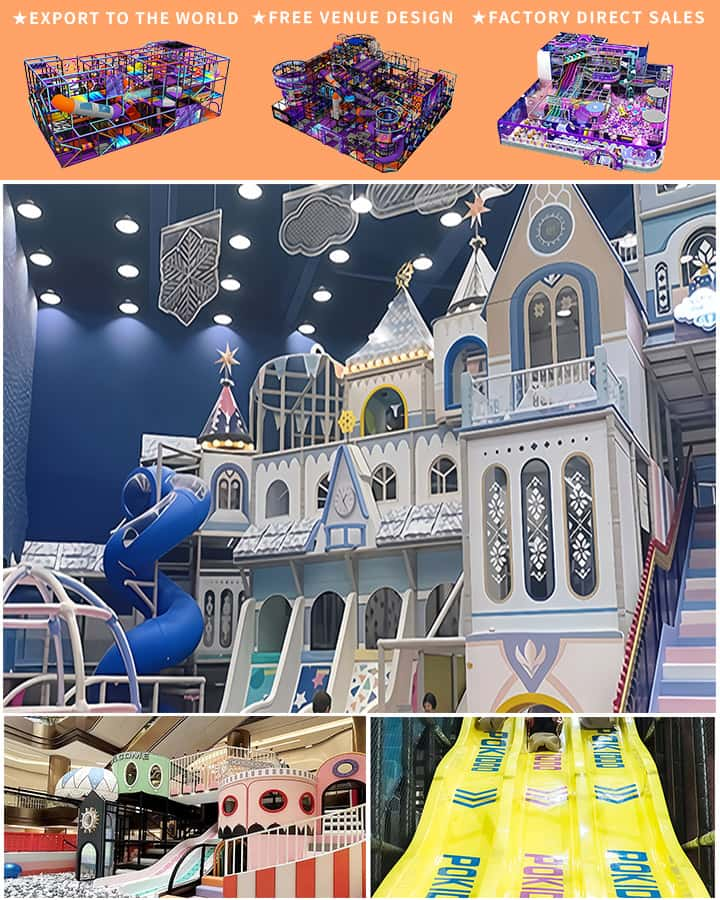Creating a vibrant and engaging playground for children is both an art and a science. It demands creativity, safety, and meticulous planning to ensure that the final product not only captures the imagination of young minds but also provides a secure environment for their playful adventures. Central to this process is the use of Computer-Aided Design (CAD) blocks, which have revolutionized the way designers conceptualize and execute playground equipment. In this article, we explore the crucial role of CAD blocks in designing kids’ playgrounds and how they contribute to safer, more imaginative play spaces.
The Power of CAD Blocks in Playground Design
1. Precision and Accuracy
One of the primary advantages of using CAD blocks in playground design is the precision and accuracy they offer. These pre-drawn symbols and templates can be easily inserted into the design, ensuring that every piece of equipment is correctly proportioned and placed. For instance, when designing a climbing frame, CAD blocks allow designers to specify the exact dimensions and angles, which is essential for both safety and manufacturability. This level of detail helps avoid costly errors and ensures that the final installation meets all safety regulations and standards.
2. Efficiency and Speed

Traditional drawing methods are time-consuming and often prone to mistakes. With CAD blocks, designers can drastically reduce the time it takes to create detailed playground designs. Pre-made blocks for swings, slides, seesaws, and other common playground elements can be quickly assembled, modified, and rearranged within the digital space. This efficiency allows designers to explore multiple configurations and iterations without the need for extensive rework, ultimately leading to faster project turnaround times.
3. Enhanced Visualization
Visualizing a playground layout on paper can only give a limited perspective. CAD software, however, offers three-dimensional visualization capabilities that bring designs to life. Using CAD blocks, designers can create realistic renderings and animations, allowing stakeholders to experience the playground before it is built. This is particularly useful in gaining approval from clients, parents, and community members who may have input or concerns about the proposed design.
Safety First: Ensuring Compliance with Standards
Playground safety is paramount, and CAD blocks play a vital role in ensuring that designs comply with industry standards and regulations. By incorporating accurate measurements and specifications, designers can guarantee that the equipment will meet safety requirements such as appropriate height, distance between bars on climbing structures, and surface materials designed to cushion falls. CAD software often comes equipped with libraries of standardized CAD blocks that adhere to these safety guidelines, providing peace of mind and reducing liability risks.
Customization and Creativity
While pre-made CAD blocks offer convenience and efficiency, the creative possibilities are virtually limitless. Designers can customize these blocks to suit specific themes, environments, and client preferences. Whether it’s a whimsical fantasy playground with dragon slides and enchanted castles or a nature-inspired area with treehouses and rock climbing walls, CAD blocks can be adapted and combined to bring any vision to fruition. This flexibility encourages innovative design solutions that cater to diverse communities and age groups.
Collaboration and Communication
The collaborative nature of modern design projects often involves multiple team members, including architects, engineers, and landscape designers. CAD blocks facilitate seamless communication among these professionals by providing a universal language for design elements. Everyone involved can easily understand and manipulate the digital models, fostering better collaboration and ensuring that each aspect of the playground design aligns with the overall vision.
Conclusion
In conclusion, the use of CAD blocks in playground design is transforming the way we create recreational spaces for children. By offering precision, efficiency, enhanced visualization, safety compliance, and creative freedom, CAD blocks empower designers to craft playgrounds that are not only safe and functional but also richly imaginative and inclusive. As technology continues to evolve, so too will the ways in which we can harness its potential to build vibrant, engaging play environments that delight and inspire the next generation.




